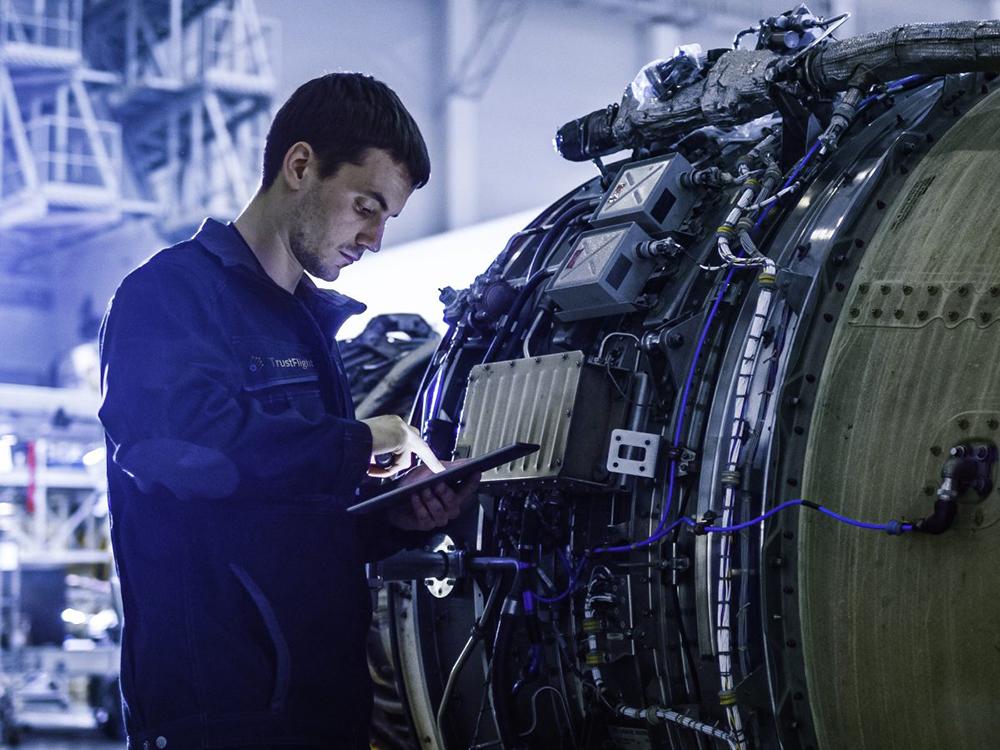Boeing, MTU Maintenance Launch New Aftermarket Software Products

Two newly launched aircraft maintenance software products are aiming to simplify processes and reduce costs for aviation customers.
MTU Maintenance has launched its own engine fleet management software product, called Cortex. The software combines MTU’s engine technical data with algorithms and artificial intelligence to generate engine planning scenarios, including workscopes down to modular level across engine lifetime. The MRO provider’s engine experts will use the software to review scenarios and help customers decide the best course of action for their fleet.
“Our new service reduces maintenance and operating cost and increases dispatch reliability for airlines. It is completely customizable, immediate and proactive,” says Martin Friis-Petersen, senior vice president of MRO programs at MTU.
Friis-Petersen adds that the COVID-19 pandemic has resulted in engine fleet planning being more prone to change than usual, so he believes Cortex will be key for airlines. “Combined with MTU’s expert recommendations, they can then assess various scenarios and maximize the use of existing assets, for instance in a restart scenario, but also avoid unnecessary spend,” he says.
The launch customer for Cortex will be Latam Airlines, which operates a fleet of more than 200 V2500 engines. According to Paulo Rimbano, Latam’s director of engineering, the software will help it achieve optimum long-term planning strategy and cost savings. “It creates a highly detailed and visualized plan for us to work with,” adds Rimbano.

Meanwhile, Boeing and aviation records specialist TrustFlight have partnered with learning technology specialist RaceRocks and the University of British Columbia (UBC) to build a new digital aircraft records platform. The project aims to improve on existing aviation industry technologies by offering what the companies say will be “the world’s first truly global, web-based component and airworthiness records platform connecting data across the supply chain.”
The software, called the Digital Aviation Record System (DARS), will be developed in Canada and it is receiving investment and support from the country’s Digital Technology Supercluster.
Each partner in the project will contribute its own expertise: Boeing will provide industry knowledge and experience, TrustFlight will focus on digitizing paper-based processes, UBC will contribute research expertise in blockchain, and RaceRocks will add experience with developing online fleet decision capabilities and extrapolating data into simplified user interfaces.
The companies say DARS will enhance functionality of existing industry maintenance and MRO system providers by allowing transfer of accurate information, removing the need for manual data entry and delivering efficiency improvements.
“Most systems that manage and record aircraft maintenance are either paper-based or operator specific software solutions that are often unable to communicate with one another, meaning data has to be input and transferred manually,” says Karl Steevs, CEO of TrustFlight.
Steevs says the partners expect a consolidated digital platform like DARS to improve airline maintenance productivity and efficiency by up to 25%, which could potentially save the industry $3.5 billion a year.
The first DARS service to be offered will be a digital engine log, which will be available in early 2022.
The partners expect the DARS project to create around 40 skilled aviation data and software jobs in Canada within the first 12 months. As the market develops over the following 2-4 years, they expect this to increase to between 150-500 new roles.





